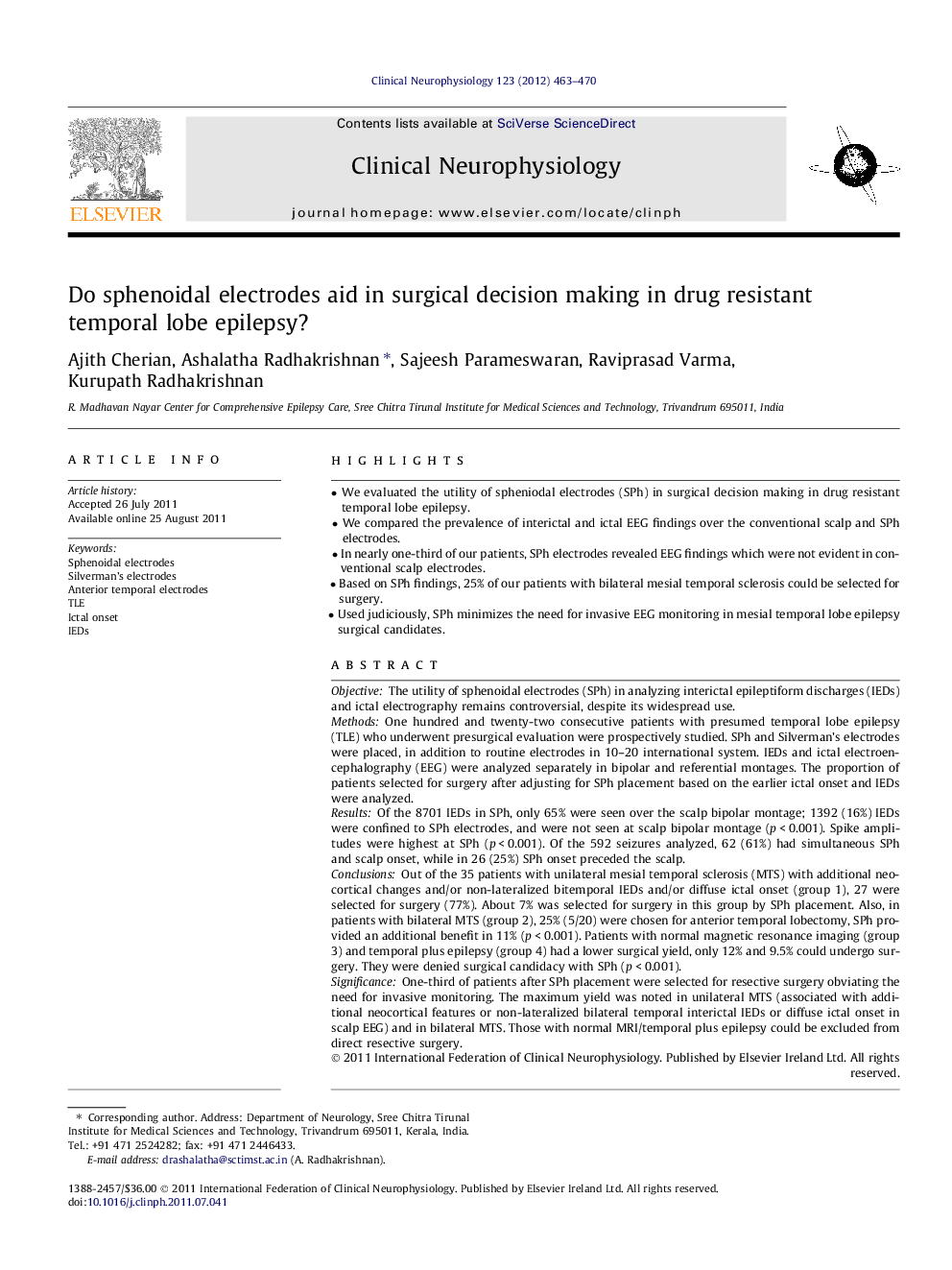| Article ID | Journal | Published Year | Pages | File Type |
|---|---|---|---|---|
| 3045434 | Clinical Neurophysiology | 2012 | 8 Pages |
ObjectiveThe utility of sphenoidal electrodes (SPh) in analyzing interictal epileptiform discharges (IEDs) and ictal electrography remains controversial, despite its widespread use.MethodsOne hundred and twenty-two consecutive patients with presumed temporal lobe epilepsy (TLE) who underwent presurgical evaluation were prospectively studied. SPh and Silverman’s electrodes were placed, in addition to routine electrodes in 10–20 international system. IEDs and ictal electroencephalography (EEG) were analyzed separately in bipolar and referential montages. The proportion of patients selected for surgery after adjusting for SPh placement based on the earlier ictal onset and IEDs were analyzed.ResultsOf the 8701 IEDs in SPh, only 65% were seen over the scalp bipolar montage; 1392 (16%) IEDs were confined to SPh electrodes, and were not seen at scalp bipolar montage (p < 0.001). Spike amplitudes were highest at SPh (p < 0.001). Of the 592 seizures analyzed, 62 (61%) had simultaneous SPh and scalp onset, while in 26 (25%) SPh onset preceded the scalp.ConclusionsOut of the 35 patients with unilateral mesial temporal sclerosis (MTS) with additional neocortical changes and/or non-lateralized bitemporal IEDs and/or diffuse ictal onset (group 1), 27 were selected for surgery (77%). About 7% was selected for surgery in this group by SPh placement. Also, in patients with bilateral MTS (group 2), 25% (5/20) were chosen for anterior temporal lobectomy, SPh provided an additional benefit in 11% (p < 0.001). Patients with normal magnetic resonance imaging (group 3) and temporal plus epilepsy (group 4) had a lower surgical yield, only 12% and 9.5% could undergo surgery. They were denied surgical candidacy with SPh (p < 0.001).SignificanceOne-third of patients after SPh placement were selected for resective surgery obviating the need for invasive monitoring. The maximum yield was noted in unilateral MTS (associated with additional neocortical features or non-lateralized bilateral temporal interictal IEDs or diffuse ictal onset in scalp EEG) and in bilateral MTS. Those with normal MRI/temporal plus epilepsy could be excluded from direct resective surgery.
► We evaluated the utility of spheniodal electrodes (SPh) in surgical decision making in drug resistant temporal lobe epilepsy. ► We compared the prevalence of interictal and ictal EEG findings over the conventional scalp and SPh electrodes. ► In nearly one-third of our patients, SPh electrodes revealed EEG findings which were not evident in conventional scalp electrodes. ► Based on SPh findings, 25% of our patients with bilateral mesial temporal sclerosis could be selected for surgery. ► Used judiciously, SPh minimizes the need for invasive EEG monitoring in mesial temporal lobe epilepsy surgical candidates.
